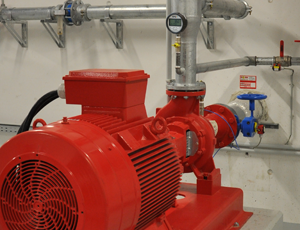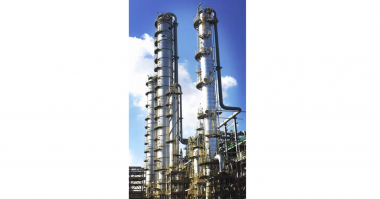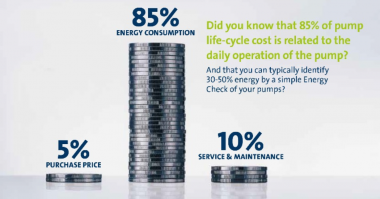The only way to reliably monitor a pump is to install two digital pressure gauges – one on the suction nozzle, and the other on the discharge nozzle. Together with your pump performance curve, the gauges will tell you how well your pump is performing, and offer clues as to how you can improve its performance. A pump running at its Best Efficiency Point (BEP) will run with very little maintenance for decades.
Pressure gauge selection is an important step to making pump monitoring easy for your operators. A digital gauge is a must on a pump, as a dial gauge will not last long when a pump is running poorly and vibrating. Dial gauges fall out of calibration too quickly to be relied upon.
When you purchase your digital pressure gauge, you’ll need to choose how your pressure gauge references zero and reacts to pressure. This is important because it affects how the gauge responds to negative (vacuum) pressure, how the gauge is read, and what conversions your operators will need to perform in order to interpret the pressure reading.
We’ll discuss two pressure types – the two that deal with negative, or vacuum, and positive pressure. Your pump will often pull a vacuum at the suction nozzle and turn that into positive pressure at the discharge. The two pressure types that read negative and positive pressure are:
- Compound
- Absolute
A compound pressure gauge uses atmospheric pressure as its zero point, and calls anything below atmospheric pressure (14.7 psi at sea level) a negative pressure. In contrast, an absolute pressure gauge uses a full vacuum (-14.7 psi at sea level) as its zero point, and therefore considers all pressure readings a positive pressure. The easiest gauge to use on a pump is an absolute pressure gauge. Here are two BIG reasons why:
Calculating the Differential Pressure
The pump’s performance is based on the differential pressure between the suction and discharge nozzles. This is the energy the pump is able to add to the system in order to move it from point A to point B. To get the differential, you subtract the suction pressure from the discharge pressure. This is easier when both pressures read as a positive.
If you’re using a compound pressure gauge on both sides of the pump, you often have a different unit of measure for the negative pressure – such as inHg – that you’ll need to convert to psi before you can calculate the differential.
With absolute pressure gauges on both sides, however, all pressure is considered positive (above absolute zero) and the units of measure are the same (psi, bar, mbar, kpa, etc). In fact, with two digital pressure gauges, you can choose your unit of measure. Your absolute gauge could read in feet of water, or head, which is the same unit that your pump performance curve uses.
Pump System Math
Another great reason to stick with absolute pressure gauges is easier pump system math. When you get into the nuts and bolts of your pump system and performance, you’ll end up calculating two important numbers – NPSH and TDH. Those two are Net Positive Suction Head and Total Dynamic Head.
Simply put, NPSH is the suction head (or pressure measured in feet of water) that is required by the pump and actually supplied to the pump. TDH is the total head (or pressure measured in feet of water) that your pump will need to overcome to move your liquid from point A to point B. These two numbers will help you understand under what parameters to safely operate your pump.
Without getting into the math in this article, the equations are done in absolute pressure. Using absolute pressure gauges helps you keep it as simple as possible. To read about NPSH, TDH, and a whole lot of other important pump knowledge, check out this “cheat sheet” by world-renowned pump expert Larry Bachus.
Keeping It Simple
At the end of the day, you want this to be as easy and simple as possible. Your pump operators don’t need to understand all the math and all the reasons why (though somebody should!). What they really need is a basic understanding of how to operate a pump and manipulate a pump system to keep your pump at its Best Efficiency Point. Using absolute zero as your reference point across the system helps them avoid conversions and confusion.
The best thing you can do to help your pumps operators is to install digital pressure gauges on the suction and discharge nozzles of your pumps. With a constant awareness of how your pumps are performing, they can keep your pumps running smoothly.
Most companies wait for a pump to fail, and then simply replace parts on the pump. This is a costly and ill-fated endeavor. When a pump is simply repaired and put back into service, no work is done to figure out why the pump is failing and how to prevent the failure in the future.
Give your operators the proper instrumentation they need to monitor pumps efficiency. Only then will there be enough clues to determine what in the pumping system has changed, why the specified pump is experiencing difficulties, and how the problem can be permanently fixed.
Questions about any of this? Contact us and we’ll help you make the decisions that will improve your pump reliability and save thousands of dollars. ROI is at your fingertips, and it all starts with digital pressure gauges.





Comments